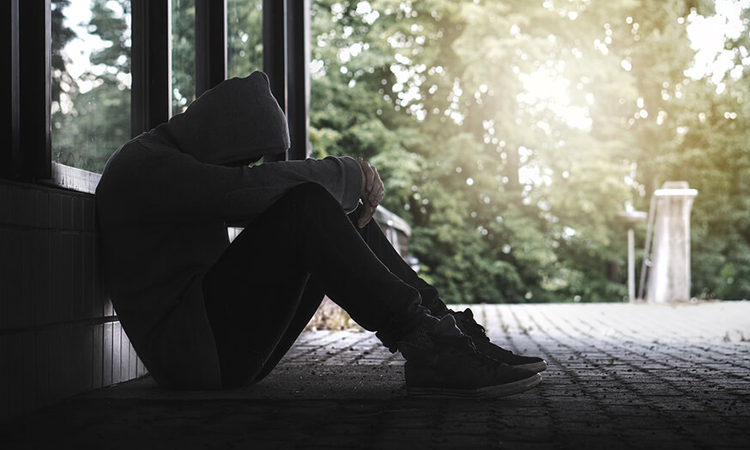
Social Anxiety Disorder and Alcohol Use Disorder – Social anxiety disorder (SAD) also referred to as social phobia, is a mental illness characterized by an intense, ongoing fear of being watched and judged by others. This fear affects work, school, and daily social and interactions.
AUD is a “chronic relapsing brain disease characterized by compulsive alcohol use, loss of control over alcohol intake, and a negative emotional state when not using.” According to a 2016 study, SAD “commonly co-occurs with, and often precedes, alcohol use disorder” by a process in which “natural selection [leaves] socially anxious individuals vulnerable to alcohol use.”
What is Social Anxiety Disorder?
SAD is a common anxiety disorder in which the person experiences fear or anxiety in some or all social situations such as dating, meeting new people, and interviewing for a job. In addition, people who experience SAD may avoid doing everyday activities like eating in front of others or using a public restroom.
This fear of being judged, rejected, or embarrassed in front of others can be so overwhelming that the person feels they cannot control it, and as a result, it adversely interferes with life activities and leads to social avoidance and isolation.
Some people with SAD experience the condition primarily through “performance anxiety” – moreover, they have symptoms of SAD during public speaking, playing sports, or other situations in which they feel pressure to perform.
SAD usually begins during youth among people who are very shy or awkward around others. SAD is relatively common, and research suggests that around 7% of Americans are affected by it. Without treatment, SAD tends to be long-lasting and can significantly hinder a person’s academic, professional, social progress.
Signs and Symptoms of Social Anxiety Disorder
When having to be around or perform in front of others, people with SAD may experience the following:
- Blushing, sweating, trembling, and rapidly beating heart
- Nausea or feelings of “butterflies” in their stomach
- Rigid body posture, appear “frozen”, make little or no eye contact, or speak very softly as to not be heard
- Fear and difficulty being with other people, especially strangers, and have a hard time conversing with them despite the desire to do so
- Self-consciousness in front of others and feeling embarrassed or awkward
- Fear that other people will judge them
- Avoidance from places where there are other people
What Causes SAD?
Researchers believe there are many factors that may contribute to the development of SAD, including:
- Family history – SAD sometimes runs in families
- The tendency to misread the behavior or intentions of others
- Underdeveloped social skills
- Stress and environmental triggers growing up, such as having a parent with anxiety
- In youth, experiencing or witnessing something particularly humiliating happen
What is Alcohol Use Disorder?
According to the National Institute on Alcohol Abuse and Alcoholism (NIAAA), an estimated 16 million people in the U.S. have an AUD. Persons diagnosed with AUD must meet two of the following 11 criteria during the same 12-month period. Based on the number of criteria met, the condition may be considered mild, moderate, or severe.
To determine if you or loved one have an AUD, here are some questions to answer. In the past year, can you or your loved one answer “yes” to any the following questions?
Have you…
…experienced times when you ended up consuming more alcohol or drank for a longer time than you intended?
…felt the desire to cut down or stop drinking more than once but found that you could not?
…spent a significant amount of time drinking, obtaining alcohol, or being hungover/getting over the after-effects?
…on multiple occasions, experienced cravings or strong urges to drink?
…found that drinking and being sick from drinking interfered with family, professional, or academic responsibilities?
…continued drinking despite adverse consequences and conflicts with your family or friends?
..given up or lost interest in activities that were important or pleasurable in lieu of drinking?
…found yourself in situations while drinking that increased your risk of harming yourself or something else, such as driving, swimming, using machinery, or having unsafe sex?
…continued using alcohol despite having feelings of anxiety or depression or after a blackout or other health problem caused by drinking?
…found yourself drinking more than you once did to achieve intoxication?
…suffered from withdrawal symptoms after the effects of alcohol wore off, such as insomnia, shakiness, restlessness, nausea, vomiting, etc.?
If you have experienced any or all of these symptoms, your alcohol use may already be a cause for concern. The more symptoms you have experienced, the more urgent the need for treatment.
Treatment for Social Anxiety Disorder and Alcohol Use Disorder
As noted, SAD and AUD commonly co-occur. People with SAD often use alcohol as a means to socially “lubricate” or reduce anxiety in social situations. However, alcohol use does not cure SAD, and can indeed exacerbate it when a person begins using alcohol in excess and isolates or hides the habit from others due to alcoholism’s own embarrassing stigma.
SAD and AUD can and should be treated simultaneously. Fortunately, our center offers therapy, counseling, and other services in both inpatient and outpatient formats to help patients manage SAD and achieve long-lasting sobriety and wellness.